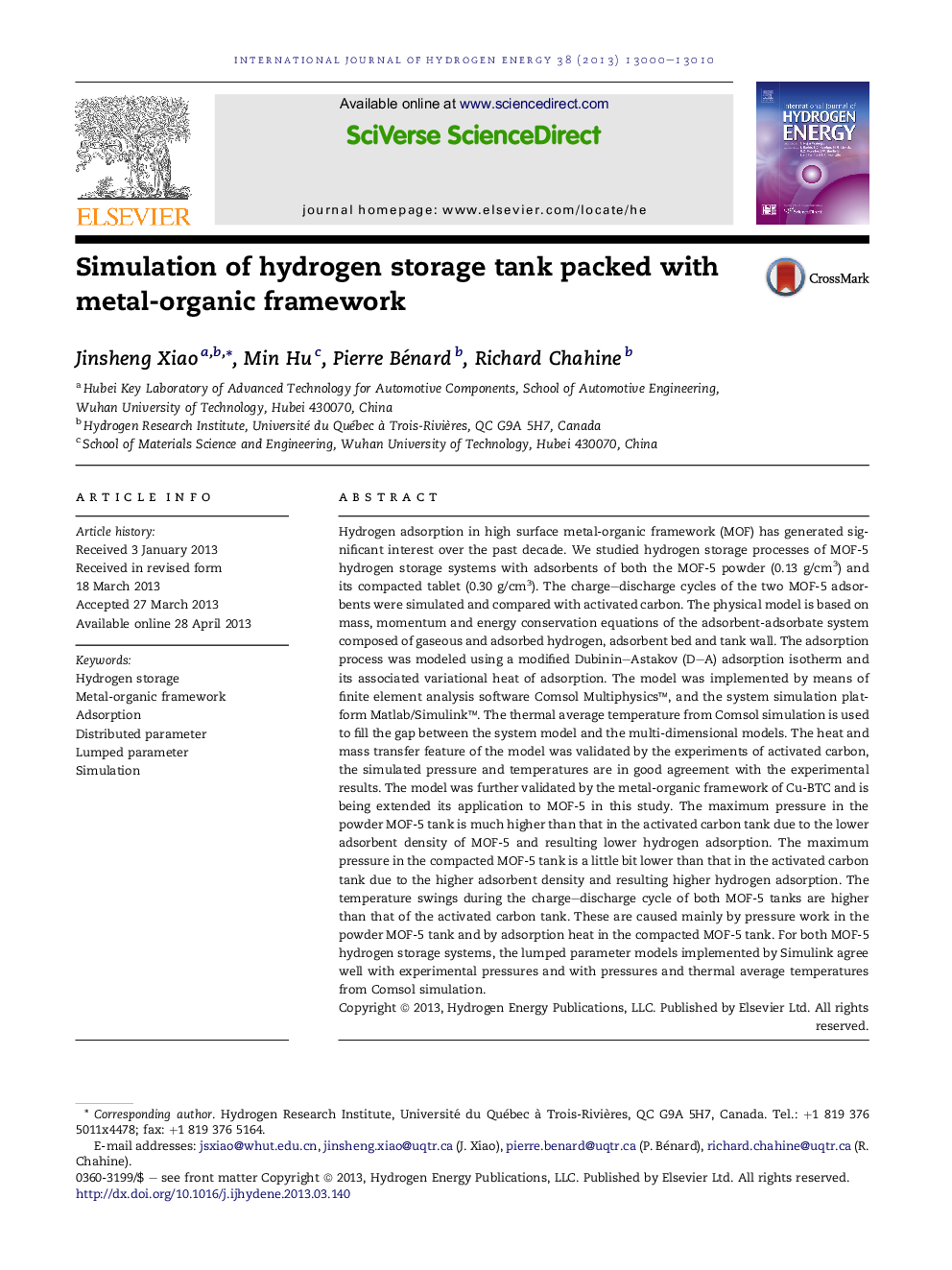| کد مقاله | کد نشریه | سال انتشار | مقاله انگلیسی | نسخه تمام متن |
|---|---|---|---|---|
| 7721662 | 1497516 | 2013 | 11 صفحه PDF | دانلود رایگان |
عنوان انگلیسی مقاله ISI
Simulation of hydrogen storage tank packed with metal-organic framework
ترجمه فارسی عنوان
شبیه سازی مخزن ذخیره سازی هیدرولیک بسته بندی شده با چار چوب فلزی
دانلود مقاله + سفارش ترجمه
دانلود مقاله ISI انگلیسی
رایگان برای ایرانیان
کلمات کلیدی
ذخیره سازی هیدروژن، چارچوب فلزی-ارگانیک، جذب، پارامتر توزیع، پارامتر لمسی شبیه سازی،
موضوعات مرتبط
مهندسی و علوم پایه
شیمی
الکتروشیمی
چکیده انگلیسی
Hydrogen adsorption in high surface metal-organic framework (MOF) has generated significant interest over the past decade. We studied hydrogen storage processes of MOF-5 hydrogen storage systems with adsorbents of both the MOF-5 powder (0.13 g/cm3) and its compacted tablet (0.30 g/cm3). The charge-discharge cycles of the two MOF-5 adsorbents were simulated and compared with activated carbon. The physical model is based on mass, momentum and energy conservation equations of the adsorbent-adsorbate system composed of gaseous and adsorbed hydrogen, adsorbent bed and tank wall. The adsorption process was modeled using a modified Dubinin-Astakov (D-A) adsorption isotherm and its associated variational heat of adsorption. The model was implemented by means of finite element analysis software Comsol Multiphysicsâ¢, and the system simulation platform Matlab/Simulinkâ¢. The thermal average temperature from Comsol simulation is used to fill the gap between the system model and the multi-dimensional models. The heat and mass transfer feature of the model was validated by the experiments of activated carbon, the simulated pressure and temperatures are in good agreement with the experimental results. The model was further validated by the metal-organic framework of Cu-BTC and is being extended its application to MOF-5 in this study. The maximum pressure in the powder MOF-5 tank is much higher than that in the activated carbon tank due to the lower adsorbent density of MOF-5 and resulting lower hydrogen adsorption. The maximum pressure in the compacted MOF-5 tank is a little bit lower than that in the activated carbon tank due to the higher adsorbent density and resulting higher hydrogen adsorption. The temperature swings during the charge-discharge cycle of both MOF-5 tanks are higher than that of the activated carbon tank. These are caused mainly by pressure work in the powder MOF-5 tank and by adsorption heat in the compacted MOF-5 tank. For both MOF-5 hydrogen storage systems, the lumped parameter models implemented by Simulink agree well with experimental pressures and with pressures and thermal average temperatures from Comsol simulation.
ناشر
Database: Elsevier - ScienceDirect (ساینس دایرکت)
Journal: International Journal of Hydrogen Energy - Volume 38, Issue 29, 30 September 2013, Pages 13000-13010
Journal: International Journal of Hydrogen Energy - Volume 38, Issue 29, 30 September 2013, Pages 13000-13010
نویسندگان
Jinsheng Xiao, Min Hu, Pierre Bénard, Richard Chahine,
